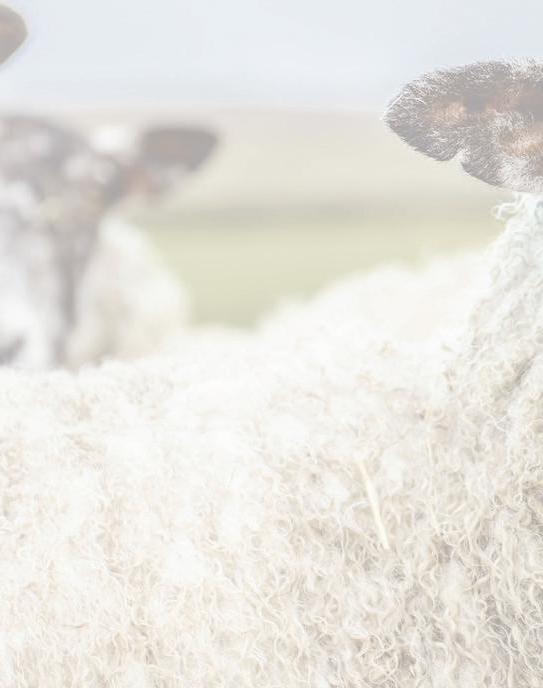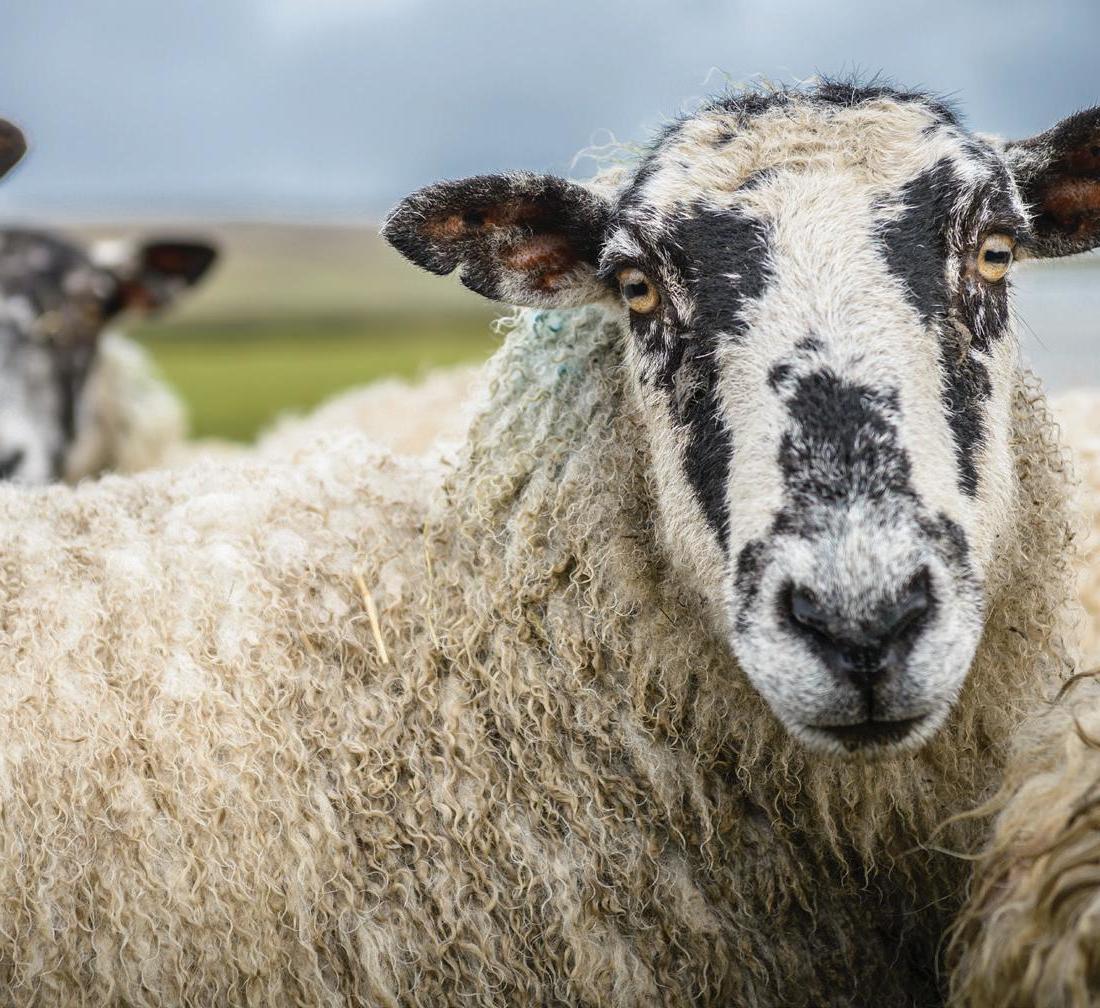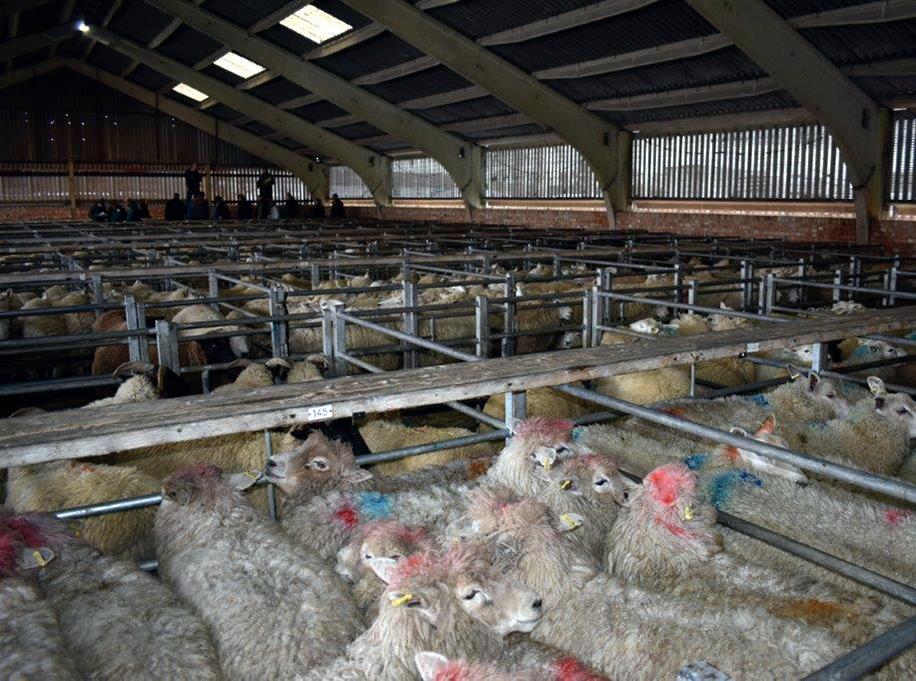
9 minute read
MARKET REPORTS

LAMB BONANZA CONTINUES
As this report is being written (early June), lamb prices are still at record levels, with the number of new season lambs seemingly inadequate for the demand; let us hope this trend continues throughout the summer.
With the move from light lambs to 42-45kg lambs a strong trend, we are seeing excellent returns for new season lambs at between £140 to £160 in many cases, particularly where lambs were well fi nished but not fat.
This is such an encouragement for sheep producers. It will be interesting to see where replacement stock is valued in the July sales. The cull ewe trade is also strong, with numbers easily absorbed in all sections.
As would be expected at the time of year, old season lambs are reducing in number substantially, but these are still wanted at the time this report is being written, with old season lambs still seen to £150 a head and above with buyers keen to purchase weight.
The cattle trade is also substantially better than we had anticipated and much better than 12 months ago, with well-fi nished prime cattle easily trading between 220p/kg and 250p/kg, with the relaxation
GRAHAM ELLIS FRICS FAAV FLAA
For and on behalf of Stanfords
T: 01206 842156 E: info@stanfords-colchester.co.uk
www.stanfords-colchester.co.uk
in Covid-19 regulations ensuring the catering trade is increasing and helping the demand.
The increased prime cattle trade is also refl ected in the store cattle. Prices are well above 12 months ago, with farmers looking to replace stock sold to advantage.
We also saw a strong trade for cull cows and over-age prime cattle, with the wholesale catering trade looking to absorb this meat for processing and the better weather again helping the trade here with outdoor catering increasing in the summer months.
It was also good to see the pig trade increasing, although it is still at low levels and a much greater increase is required. With feed prices at exceptionally high levels, pig producers still have marginal levels of return and let us hope this increases with the summer outdoor catering season.
The cull sow trade is also increasing and we are not in the doldrums of January and February, when it was almost impossible to shift cull pigs.
With the better weather at the beginning of June, tremendous growth was seen in arable crops, with a good harvest now looking likely despite some areas of East Anglia still having lower than anticipated rainfall but in general crops look tremendous and yield potential is certainly there.
Grass is also at last growing, the warm weather which arrived in early June boosting the grass growth giving graziers of sheep and cattle the benefi t of natural, cheaper food.



westpoint farm vets 100% Farm Vets
Supporting British Livestock Agriculture Since 2000
Our practices provide the following services in Kent, Sussex, Surrey & Hampshire:
LUMP SUM EXIT
SCHEME CONSULTATION
Routine and first opinion work Local 24 hour emergency cover Direct line to experienced vet at any time - free of charge Flock and herd health planning Routine fertility and scanning Milk quality monitoring Mastitis consultancy Bull and ram testing Foot trimming & mobility services Benchmark and discussion groups Farmer education and training
Contact your nearest practice for a FREE initial visit
Westpoint Horsham
covering Surrey and West Sussex Westpoint Sevenoaks
covering North Kent and East Sussex 01306 628086 01959 564383 Westpoint Winchester Westpoint Heathfield Westpoint Ashford
covering Hampshire covering East Sussex covering Kent and East Sussex
01962 779593 01435 869047 01306 628208
westpointfarmvets.co.uk The National Sheep Association (NSA) has welcomed the consultation launched by DEFRA on the proposed lump sum exit scheme and the delinking of basic payments as “a further step towards developing clarity over the new future farming schemes and what will replace the BPS”.
The consultation, launched on 19 May, lasts for 12 weeks and focuses on the exit scheme – which will off er lump sums to farmers who want to leave the industry to help them do so “in a planned and managed way” – and delinking direct payments.
On de-linking, DEFRA has said: “The Government plans to phase direct payments out over a gradual seven year transition period, to move to a fairer system. The consultation includes plans to separate the payment from the amount of land farmed, from 2024. This will simplify the process for farmers, allow them to focus on running their business and encourage them to take up the government’s new Environmental Land Management schemes, which will reward sustainable food production and environmental improvements.”
NSA Chief Executive Phil Stocker responded: “While this consultation frames some of Defra’s thinking, we will still have to wait until October for fi nal details and the clock is ticking fast in terms of the reductions in BPS and the development of new future farming schemes. At this stage, NSA’s thinking is that we welcome support to help those who want to retire to do so with dignity, more so than we want to see farmers encouraged to exit.”
The NSA has also said it “would not want to see a new career made from devising ways to take benefi t from the scheme without meaningful change on the ground”. The consultation closes on 11 August.
ELWYN DAVIES
Reporting on the sheep market at Ashford
T: 01233 502222
www.hobbsparker.co.uk
As we approach a relatively quiet period of year for livestock marketing following the seasonal sales of store cattle in the spring and we move from hoggets to new season lambs, it is a good time to refl ect upon the recent trade for both beef and lamb. These are certainly unprecedented times for the industry, with a prolonged period of prices at record levels, with producers benefi tting from unusually tight supplies and relatively strong demand at retail level and the recent return of the food service sector.
The increasingly tight supplies are resulting from declining numbers of both dairy and beef breeding cows and a national sheep fl ock shrinking to its lowest level since 2012. This trend in production has been happening for several years due to a decade of minimal profi t and poor returns for producers and increasing lack of enthusiasm amongst many of the younger generation.
The demand, on the other hand, has escalated during the Covid-19 pandemic, with a surge in business at retail level for quality meat at relatively low cost compared with dining out. This shift in balance, with demand far out stripping supply, is now favouring production, with consequential price infl ation and improved margins.
Here at Ashford Market, the cattle throughput fi gures have been exceptionally good, with 2,700 fi nished clean cattle and cull cows sold to date, up 23% on the year, and although the 4,650 store cattle are down by 12%, this was very much expected due to the high volume of sales last autumn.
April proved to be the busy month for stores, with over 2,200 sold over the four week period, with many top quality consignments from regular vendors. The entries were particularly boosted towards the end of the month with several
RECORD PRICES MAINTAINED
producers selling earlier in the year than usual due to limited winter forage, lack of keep, fears of a drought summer and being encouraged to sell by the bullish trade.
All beef sectors have benefi tted from trade improving dramatically. Finished cattle are averaging £1,200 (plus 20%), cull cows averaging £860 (plus 16%) and store cattle averaging £800 (plus 12%) compared with recent years. This trade has been supported by increased numbers of buyers at Ashford Market, with up to nine individual outlets around the fi nished and cull cow ring and several new customers from the west country and north of England competing with our regular customers for store cattle.
Recent highlights in the cattle section have included:
• Finished steers – continental crosses:
grossed £1,719, £1,623 and £1,589 from
Barleybrook Farm, Heathfi eld; £1,631 from
K & P M Sinden & Son, Sevenoaks and £1,557 from W Alexander (Shoreham) Sevenoaks and native bred £1,445 from Leggatt Farming Ltd,
Maidstone.
• Finished heifers – continental cross:
£1,645 from A Price, Maidstone, £1,559 from
W Alexander (Shoreham) Sevenoaks, £1,501 from A & M Lyon, Dover and 259p per kg from
Shaun Marsh, Dover and native bred: £1,543 from Leggatt Farming Ltd, Maidstone. • Cull cows – beef: £2,242 from Andrew
Price, Maidstone, £1,506 from W S Furnival (Brookland) Romney Marsh and £1,493 from G
Bates Ltd, Maidstone with dairy: £1,447 from
M W Goddard, Dover, £1,346 from Appleton
Farms (Ledger Farm) Deal and £1,304 from W
G & T A Manford, Cranbrook.
The sheep trade has been nothing short of phenomenal this year, with fi nished clean hoggets/lambs averaging £123 to date, plus £28 on last year and plus £38 on 2019, with cull ewes averaging £89, plus £15 on last year and plus £35 on 2019. Again, tight global supplies and relatively strong demand is driving the price to these record highs. While throughput at Ashford Market is on a par with last year, refl ecting a shift back to live weight selling, we are 24% down on throughput fi gures of 2019.
The hogget trade held strong to the end, with best hoggets selling in excess of £150 in early June, and this bullish trade continued for new season lambs. Over 5,000 new seasons lambs were sold in May, up by some 13% on the year, with several vendors drawing earlier at lighter weights than usual due to the strength of the trade. The average, which held at around 325p/ kg throughout May, was about 80p above or approximately £30 per head up on the year.
Highlights in the new season lamb section have included 400p per kg (39kg grossing £156) from D T & K J Tester, Worthing; £162 from D J Morphett, Biddenden; £160 from H & J Noakes, Romney Marsh and £158 L Stevens & Sons, Sittingbourne. Top vendor of the month was Tom Masters, Seaford, selling 758 mainly 40kg to 45kg continental crosses topping at £158.50 and averaging £139 overall.
Throughout May, 11,570 sheep and 1,338 cattle were traded at Ashford Market on behalf of 386 sellers from eight counties in the South East to 136 buyers from 20 counties throughout the country. This emphasises once again the solid support from both vendors and purchasers and the overall effi ciency of the livestock auction system.
FURTHER REDUCTIONS IN ANTIBIOTIC USE
New fi gures show the amount of antibiotic prescribed to treat pigs on UK farms in 2020 fell by 5%, bringing the total reduction since 2015 to 62%.
Despite disease outbreaks and challenges during the pandemic that meant pigs spent more time on farm than usual, data collected using the electronic medicine book showed antibiotic use in 2020 dropped to 105 mg/PCU, compared with 110 mg/PCU in 2019 and 278 mg/PCU in 2015.
The data represents more than 95% of pigs slaughtered in the UK and continues the downward trend noted since recording started, although challenges with swine dysentery in 2019 and early 2020 saw a small upward ‘blip’.
The overall result is close to the target of 99 mg/PCU set by the UK pig industry, with Agriculture and Horticulture Development Board sector strategy director Angela Christison welcoming the fall, particularly in the context of a diffi cult year.
“This continued improvement, despite disruption to pig fl ow during the pandemic, is a credit to collaboration between producers, vets and the industry as a whole,” she said.










